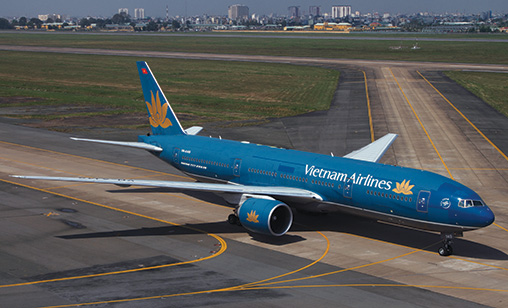News Backgrounder
Vietnam-US nonstop? Not so fast
March 1st 2019
It will likely be politics and not business that ticks off the un-served route list and produces a non-stop flight from Vietnam to the United States. Read More » Ho Chi Minh-Los Angeles is the world’s largest un-served route, which Vietnam’s growing field of airlines could carry following the US FAA upgrading Vietnam to Category 1.
Americans are the fourth-largest source of visitors to Vietnam while flows in the other direction are strong despite needing a US visa. Vietnamese are the sixth-largest group of foreign students in the US.
 |
The commercial case is not strong for a US-Vietnam non-stop service. But higher up in the government, a Vietnam-US non-stop flight appears to be a worthy matter of prestige. This could explain why listed VietJet and privately-owned Bamboo Airways are interested in US flights. Fulfilling high government priorities would curry substantial favour where there is government discretion, like slots and traffic rights.
Vietnam is closer to the US than Singapore, which has non-stop US flights. The region often sights Singapore Airlines (SIA) as a leader to follow without recognising home market differences, which are substantial.
Singapore-US has higher-yielding traffic driven by substantial premium class demand. A global network helps retain passengers and corporate contracts. Vietnam Airlines has a small footprint outside Vietnam.
Vietnam Airlines has favoured the 777X, but this saddles it with a new fleet type (it retired 777-200s) and one that is maybe too large for the airline’s other long-haul markets.
SIA’s A340-500 non-stop flights were costly since SIA did not use the A340 elsewhere in the fleet. Vietnam says it could order the A350-1000, the sister to its A350-900s.
American Airlines in early 2019 said it had no plans to serve Southeast Asia; it has codeshares with Cathay and JAL. These third-country codeshares have been permitted (before FAA Category 1 clearance, it was codeshares between US and Vietnamese airlines that were restricted). American and Vietnam started codesharing in 2006, before American’s JV with JAL and prior to Vietnam joining SkyTeam in 2010; the codeshare is no longer active.
Delta operates fifth freedoms to Singapore and Manila but now appears focused on growing Asia with JV partner Korean Air, which has three daily flights to Ho Chi Minh well-timed for North American connections.
United ended a Hong Kong-Ho Chi Minh fifth freedom service in favour of routing traffic over Tokyo with JV partner ANA.
It would be interesting if the Delta-Korean JV limits opportunities for Vietnam Airlines and sees it cooperate with United; United is the JV partner of ANA, which has a minority stake in Vietnam Airlines.
JV participation is not possible until Vietnam has passenger open skies with the US (it currently has cargo-only open skies).
Vietnam Airlines does not codeshare on any ANA trans-pacific flight. United may be using JV rules to object to Vietnam Airlines codeshares. An ANA spokeswoman only says the Vietnam Airlines cooperation is focusing on the Vietnam-Japan market.
Vietnam Airlines’ US codeshare access covers the largest Vietnamese areas: Los Angeles and San Francisco (China Airlines via Taipei) and Seattle (Delta via Tokyo). But options are limited and do not cover markets like Houston and San Jose, where ANA has a non-stop flight from Tokyo. New York and Dallas do not have a daily Vietnam Airlines codeshare while Washington DC has none at all.
Fortunately for prospective non-stop entrants, Vietnam’s US traffic is concentrated in Ho Chi Minh rather than fragmented around the country. Unfortunately, Ho Chi Minh is in Vietnam’s south, a further hour of flying than Hanoi in the north. The extra distance gives more challenge for a non-stop but an advantage to one-stop operators – and there are plenty of them.
Vietnam along with Indonesia and the Philippines form the “VIP” source markets that sustain flights from trans-pacific heavyweights like ANA, Cathay Pacific and EVA Air. New long-haul Chinese airlines play the sixth-freedom market, perhaps with a long layover or double connection but sometimes a fast and cheap ticket.
Asian hubs are favoured for US West Coast traffic, but Gulf airlines can have low fares, too. Vietnam-US is becoming more important for Qatar Airways, not only because of the blockade that shuts off key Saudi and UAE source markets, but as Qatar grows in Vietnam, adding a Da Nang service and de-linking Ho Chi Minh from Phnom Penh.
While foreign airlines would like more Vietnamese traffic rights, the existing and expanding portfolio enables strong one-stop US competition. Limited traffic rights see Asian airlines charge a premium on Vietnam-Asia O&D; they would rather sell Vietnam-US, which is lower yielding but gives higher system revenue in an over-capacity trans-pacific market.
If commercial planning does not produce a non-stop flight, then politics might. But business is often politics.